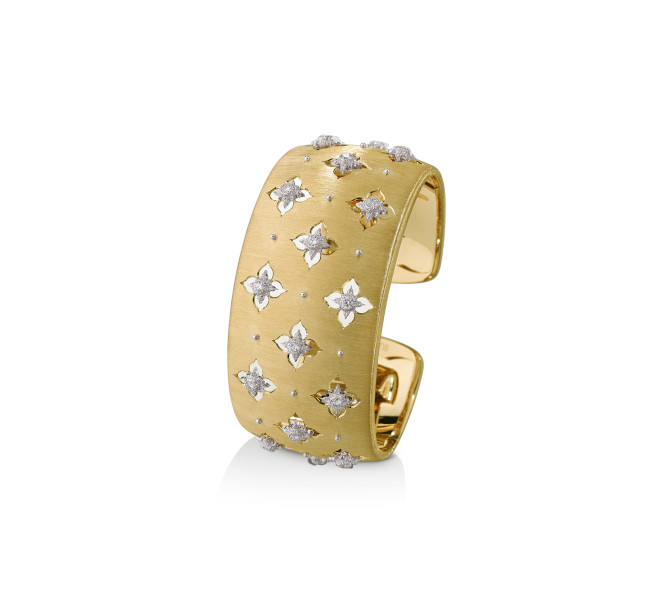Here’s Why Bejewelled Cuff Bracelets May Never Go Out of Style
Long gone are the days of simplified jewels, and subtle accessories, as haute couturiers and global high jewelry brands continually reinterpret and imagine the most remarkable designs.

Historically speaking, the bracer otherwise known in modern parlance as the jewellery cuff bracelet has an intriguing history of adornment dating back to antiquity. At first worn as functional armour for the wrist and forearm, then as decorative embellishments began to make its way onto the cuff, the accessory took on a life of its on. Prominent in almost all great civilisations of antiquity on all major continents.
From the Egyptians to the Incas, the jewellery cuffs became a significant aspect to royal attire of Mayan kings and an aristocratic measure of social class, denoting rank within the family. During the First Dynasty (2680 BC), Egyptians started adorning their gold and silver bracelets with semiprecious stones, a contemporary evolution of the bejewelled accessory that had begun as protective gear, to signifiers of rank and ritual, to now – accessory en vogue. By the time the 17th century had rolled around, jewellery bracelets became common fashionable accessories in Europe.
Symbolising prestige, wealth and power – well-crafted jewelry possess the remarkable ability to highlight personality and provide the finishing touches to a red-carpet-worthy fit. Over 3000 years on, the enduring appeal of the jewellery cuff, across all ages of mankind, has proven that this bejewelled accessory is here to stay.
Here’s Why Jewellery Cuff Bracelets May Never Go Out of Style
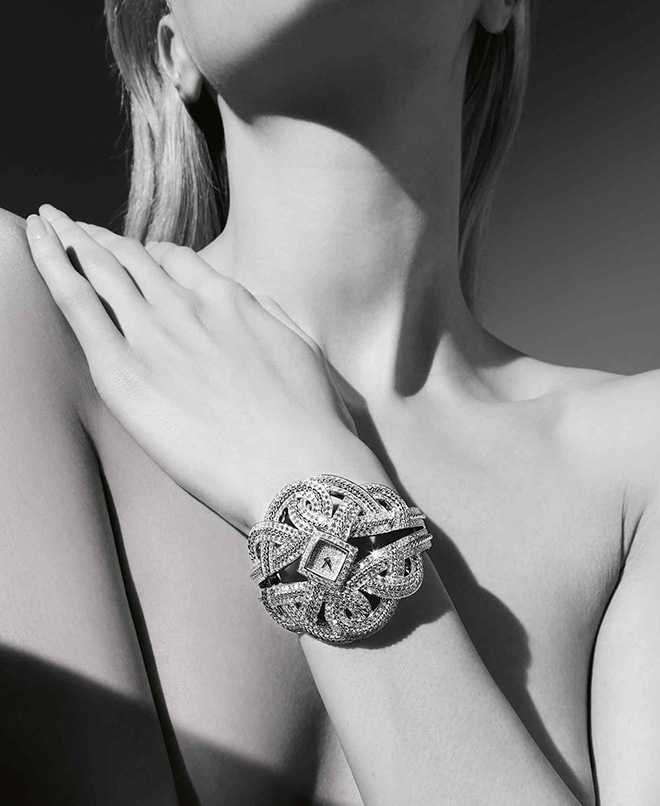
Long gone are the days of simplified jewels, and subtle accessories, as European haute couturiers, French and Italian fashion designers, and high jewelry brands all over the world, such as Ralph & Russo, Stéphane Rolland and Giambattista Valli, work tirelessly to embellish each new piece in a dazzling arrangement of crystal flourishes.
In fact, it is impossible to talk about jewellery cuffs without acknowledging Buccellati’s creations and beloved Italian creativity. Recently acquired by Richemont Group and hence, now a sister brand of Van Cleef and Arpels, Buccellati’s techniques are descended from over five centuries of Italian art. Keep in mind the cultural and artisanal etymology of historical Italian crafts, hailing from the ancient Roman Empire, a culture so debauched and decadent that they flaunted their extravagance unlike any other civilisation since; Their frivolity with absurdly numerous pieces of jewellery were even subjected them to Rome’s habitual passing of sumptuary laws, which restricted use of specific adornment by members of the populace deemed “unworthy” or “below caste” (aka low class). Between the fourth and second centuries BCE, Italian jewelry designers used filigree to interweave golden strands into floral webs, created nature-inspired figures for brooches, earrings, jewellery cuffs and even golden amulets, or “bullas,” unique magic tokens worn on a chain that would protect the wearer from evil.
- Viscontessa Bracelet: The eight oval-cut sapphires are silent drops in a sea of yellow gold embellished with diamonds. Everything is precious and nothing is ostentatious.
- With the recently re-launched collection of silver jewels named Blossoms, Lindbergh offers us the lights of the setting sun at the Venice Lido and Elisa interprets this captivating and young line with extreme simplicity. In the island stretching between the lagoon and the sea, we are struck by Elisa’s intense expression, her seductive smile, the lust for summer. The silver metal enlightens and revives the photo shoot, and becomes its absolute protagonist.
- Daisy Medium Bracelet – silver with brown diamonds
- Palazzo Pisani Moretta is an elegant 15th century building in gothic style, looking onto the Grand Canal, between the Rialto Bridge and Cà Foscari, with the imposingness of its façade. In the past, it was frequented by strongly appealing personalities such as Paul, Emperor of Russia, Pauline Bonaparte, Joseph II, the Holy Roman Emperor and now it welcomes Elisa with the elegance of its halls, its colored marbles, mysterious mirrors and light but impressive glass chandeliers. Elisa is in evening dress, with bracelets, rings and earrings of the brand new Giglio collection, also in black gold, treated with the innovative technologic DLC coating.
- Macri Giglio Cuff Bracelet Cuff in yellow gold with white gold bezels set with diamonds.
Botticelli, Brunelleschi, Donatello or Benvenuto Cellini left us with works of elevated goldsmithing to admire and emulate. To this heritage, which we obviously share with many other excellent Italian goldsmiths, Buccellati simply added its own inspiration and dedication.
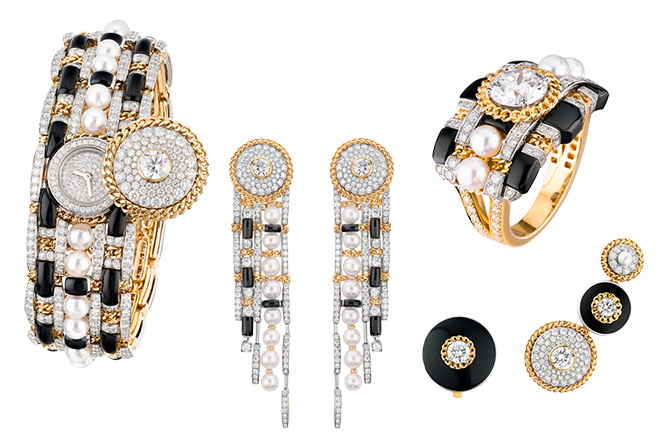
Tweed de Chanel High Jewellery Collection
Creating bracelets and watches that mimic the quality and distinct characteristics of fabric – The Chanel Spring 2020 collection featured an array of thigh-skimming apparel in tweed with 45 jewel-encrusted accessories to match.
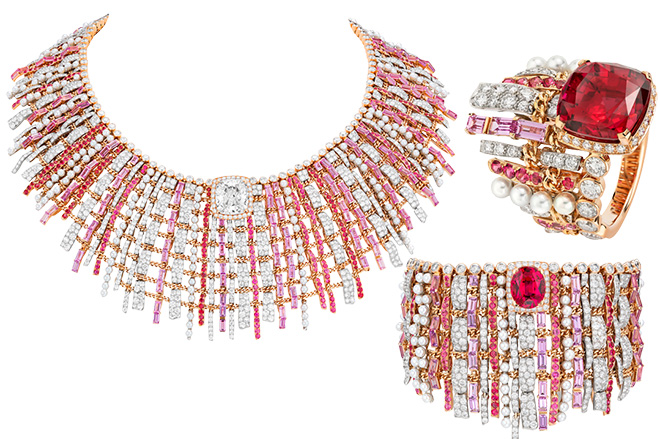
Tweed de Chanel High Jewellery Collection
The collection, which marked the first time in history that tweed had been integrated into high jewelry, showcased a diverse arrangement of white diamonds, pearls, sapphires, black onyx, and white gold. Utilizing a special articulation technique, each gemstone is layered and interweaved meticulously atop a yellow gold and platinum base, for a splendorous textured effect. Crafted in painstaking detail, the collection took months to complete, with a single necklace worth an estimated 980 hours of work.

Audemars Piguet Diamond Fury
While reimagining fabric unto cuffed jewelry may have been a first for Chanel, Swiss manufacturer of luxury mechanical watches and clocks, Audemar Piguet, has proven to be equally adventurous in venturing beyond the brand’s signature black ceramic perpetual calendar Royal Oaks and high-tech minute repeaters. Launching a series of haute joallerie watches, dubbed “Diamond Punk (2015)”, “Diamond Fury (2016)” and “Diamond Outrage (2017)” – each timepiece featured a large cuff with diamond or blue sapphire-set spiked cones throughout, amassing to a jaw-dropping 65 carats worth of stones.
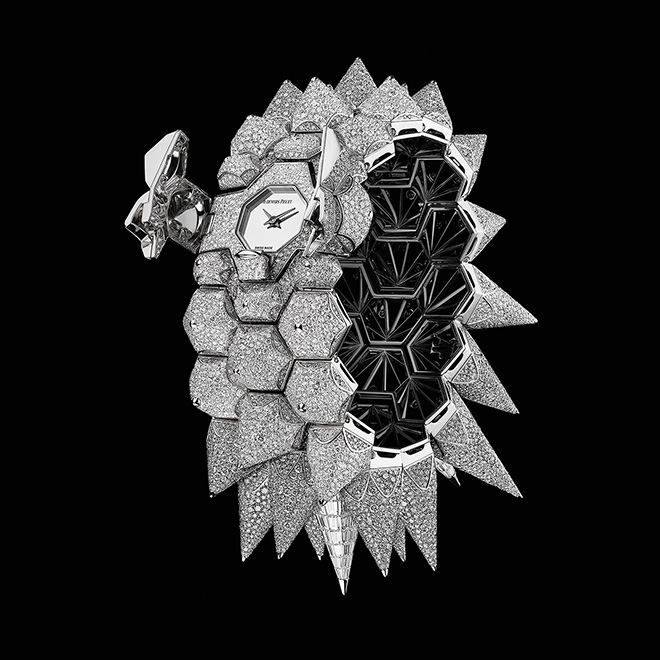
Audemars Piguet Diamond Outrage 2017
Revered as a timeless jewellery piece, perhaps its recent resurgence can be credited to one modern incarnation of a Greco-Roman warrior princess – Wonder Woman. As fashion and trends continually evolve, it is unlikely that cuffed jewelry will ever fade into obscurity, but instead be reinterpreted and imagined to greater heights – perhaps even taking bold inspiration from each era’s popular culture, inching consumers closer to a renewed sense of stylish individuality and empowerment.





